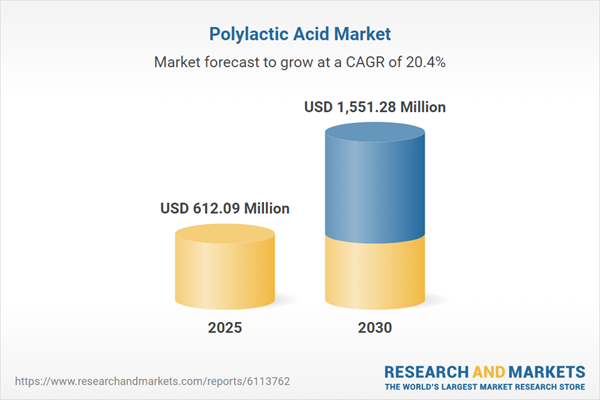The global polylactic acid (PLA) market is experiencing robust growth driven by increasing demand for sustainable, eco-friendly solutions. PLA, a leading bioplastic, is widely adopted across industries due to its biodegradable properties and versatility, aligning with global efforts to reduce environmental impact.
Market Growth Drivers
Surge in Global Bioplastics Production
The rising production of bioplastics is a primary catalyst for the PLA market. Bioplastics, including PLA, account for approximately 1% of the over 300 million tons of plastics produced annually worldwide. In 2024, global bioplastics production reached an estimated 2.43 million tons, up from 2.11 million tons in 2019, reflecting steady growth (source: European Bioplastics e.V.). PLA offers properties comparable to traditional plastics but with lower carbon emissions and enhanced waste management options, such as biodegradability. Its applications span packaging (e.g., beverage bottles), consumer electronics (e.g., keyboards), and automotive interiors, contributing to reduced greenhouse gas emissions. Rising consumer acceptance, heightened climate change concerns, and increasing costs of fossil-based materials further drive bioplastics adoption, positioning PLA as a technologically mature and efficient material.Expansion of the 3D Printing Industry
The global 3D printing industry’s growth significantly boosts PLA demand. PLA is a preferred material for desktop 3D printing due to its ease of use, versatility, and renewable nature. It is widely used in extrusion-based 3D printers, offering convenience for both beginners and advanced users. PLA’s ability to produce parts for diverse applications, coupled with its sweet aroma during printing, enhances its appeal. Significant investments in 3D printing R&D have led to technological advancements, fostering innovative product development. Notably, PLA’s role in biomedical applications, such as scaffolds for tissue engineering, is gaining traction. These scaffolds support cell growth and tissue regeneration, leveraging PLA’s biocompatibility and customizable geometrical features like pore size and internal structures.Key Applications
PLA’s versatility drives its adoption across multiple sectors:- Packaging: PLA is used in beverage bottles and other sustainable packaging solutions.
- Automotive: Its use in car interiors supports lightweight, eco-friendly designs that reduce emissions.
- Healthcare: PLA’s biocompatibility makes it ideal for medical implants and tissue engineering scaffolds.
- Cosmetics: PLA serves as a raw material in cosmetic products, meeting demand for sustainable ingredients.
- 3D Printing: PLA’s dominance in 3D printing stems from its ease of use and renewable properties.
Key Benefits of this Report:
- Insightful Analysis: Gain detailed market insights covering major as well as emerging geographical regions, focusing on customer segments, government policies and socio-economic factors, consumer preferences, industry verticals, and other sub-segments.
- Competitive Landscape: Understand the strategic maneuvers employed by key players globally to understand possible market penetration with the correct strategy.
- Market Drivers & Future Trends: Explore the dynamic factors and pivotal market trends and how they will shape future market developments.
- Actionable Recommendations: Utilize the insights to exercise strategic decisions to uncover new business streams and revenues in a dynamic environment.
- Caters to a Wide Audience: Beneficial and cost-effective for startups, research institutions, consultants, SMEs, and large enterprises.
What do businesses use our reports for?
Industry and Market Insights, Opportunity Assessment, Product Demand Forecasting, Market Entry Strategy, Geographical Expansion, Capital Investment Decisions, Regulatory Framework & Implications, New Product Development, Competitive IntelligenceReport Coverage:
- Historical data from 2022 to 2024 & forecast data from 2025 to 2030
- Growth Opportunities, Challenges, Supply Chain Outlook, Regulatory Framework, and Trend Analysis
- Competitive Positioning, Strategies, and Market Share Analysis
- Revenue Growth and Forecast Assessment of segments and regions including countries
- Company Profiling (Strategies, Products, Financial Information, and Key Developments among others).
Polylactic Acid Market Segmentation
By Type
- PDLA (Poly-D-Lactic Acid)
- PLLA (Poly-L-Lactic Acid)
- PDLLA (Poly-DL-Lactic Acid)
By Source
- Corn
- Sugarcane & Sugar Beet
- Wheat
- Others
By End-User
- Automotive
- Packaging
- Healthcare
- Textiles
- Cosmetics & Personal Care
- Others
By Geography
- North America
- USA
- Canada
- Mexico
- South America
- Brazil
- Argentina
- Others
- Europe
- UK
- Germany
- France
- Spain
- Italy
- Others
- Middle East and Africa
- UAE
- Saudi Arabia
- Others
- Asia Pacific
- Japan
- China
- India
- Australia
- Indonesia
- Thailand
- Taiwan
- Others
Table of Contents
Companies Mentioned
- TotalEnergies Corbion
- PTT Global Chemical Public Company Limited
- Sulzer Ltd.
- Futerro
- Musashino Chemical Laboratory, Ltd
- TEIJIN FRONTIER CO., LTD.
- Hangzhou Peijin Chemical Co., Ltd
Table Information
| Report Attribute | Details |
|---|---|
| No. of Pages | 142 |
| Published | June 2025 |
| Forecast Period | 2025 - 2030 |
| Estimated Market Value ( USD | $ 612.09 Million |
| Forecasted Market Value ( USD | $ 1551.276 Million |
| Compound Annual Growth Rate | 20.4% |
| Regions Covered | Global |
| No. of Companies Mentioned | 7 |









